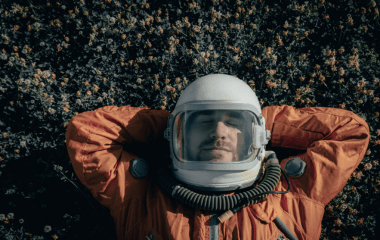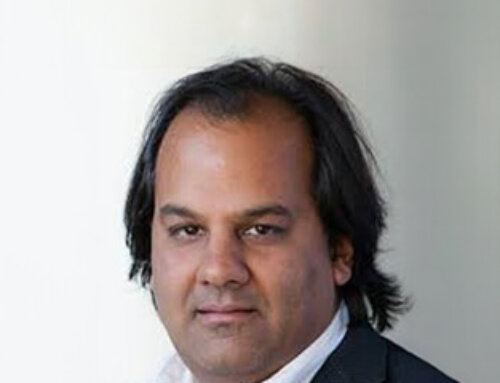Erin Flynn-Evans, PhD, MPH, director of the Fatigue Countermeasures Laboratory at NASA Ames Research Center, discusses her journey from music therapy aspirations to guiding astronauts’ sleep on future moon missions and optimizing alertness for airline pilots.
Tell us about your educational and professional background.
After completing my undergraduate degree in music and psychology, I thought I would go to grad school to become a music therapist. That path didn’t work quite as I intended. I enjoyed learning about sleep in my undergraduate classes, so I applied to work as a sleep technician at Brigham and Women’s Hospital and found my calling. I decided to get my registered polysomnographic technologist certification (RPSGT) before applying to graduate school. Through some twists and turns, I was fortunate to complete a PhD at the University of Surrey, where I was supervised by Drs. Debra Skene and Steven Lockley, while supported by a Harvard trainee fellowship. The focus of my dissertation was to explore the relationship between light and breast cancer risk. This experience introduced me to the field of epidemiology, which I also loved, so I went on to complete a Master of Public Health at Harvard School of Public Health. Working on my MPH allowed me to further study the long-term impacts of sleep loss and circadian misalignment. During my postdoctoral fellowship at Harvard Medical School and Brigham and Women’s Hospital, I was part of the Harvard Work Hours, Health and Safety Group, which examined the impact of work hours on alertness and performance outcomes in medical residents, police and astronauts. My experience working with Drs. Charles Czeisler and Laura Barger examining astronaut sleep in space led me to transition to my current position as the director of the Fatigue Countermeasures Laboratory at NASA Ames Research Center.
What sparked your interest in sleep and circadian research?
During my time as a technician, I read all of Dr. Dement’s books and was amazed by everything that he discovered about sleep and circadian rhythms. I was also inspired by how important his discoveries were to people living in the real world. Through reading his books, I realized how young the sleep field is and how much we have yet to learn. I was also lucky to end up in the sleep lab at Brigham and Women’s Hospital. There were so many incredible researchers doing both basic and applied research, and I was particularly amazed at how researchers were just learning about melanopsin and how different wavelengths of light influence human circadian rhythms and sleep. I knew that pursuing a career in sleep would always be interesting and impactful.
As the lead of the NASA Ames Research Center Fatigue Countermeasures Laboratory, what does your day look like?
My days are always different. If we are running a study in the lab, then I usually work night shifts alongside my team. I think that it’s important to stay engaged in research no matter what your position, because small methodological details can make a huge difference in the results of a study. When we aren’t actively running lab studies, I spend a lot of time in meetings with my team and with other collaborators at NASA and beyond. My team does a journal club every week, so I always make sure that I carve out time to read papers. I also try to make time to attend virtual seminars to hear about all the exciting research that is happening in the broader community.
NASA is planning a mission to the moon in 2024. Are you part of a team researching how these astronauts can optimize their sleep during spaceflight?
Yes! My team works with our operational counterparts (flight surgeons and fatigue risk management personnel) to ensure that we are translating everything that we’ve learned about sleep in space to our future missions. We want to ensure that crew can stay rested and alert throughout the missions.
You translate your research into different real-world settings. Can you tell us about your laboratory’s work with commercial airline pilots?
Our work with airline pilots involves working to better understand how different schedule designs affect alertness and performance. We use this information to help airlines build better schedules so that pilots can maximize their sleep, even when they have to work early in the morning, late at night or overnight. We also investigate tools that pilots can use to help them optimize their performance while at work.
You’re also the co-founder of Baby Sleep Science. Tell us about why you launched the company and its mission.
I didn’t actually intend to found Baby Sleep Science! I took parenting classes after my first baby was born, and other parents would bombard me with questions. Many times, other parents would ask me to fact-check weird claims that they read online. I had no idea that there was so much misinformation about baby sleep on social media. I got frustrated that people with no background or training in sleep or circadian rhythms were sharing confusing and often inaccurate information. I started working with a nurse to write evidence-based blogs to help parents understand how to interpret and apply information from sleep researchers in their quest to improve sleep for their children. Our work evolved from there, but our mission remains the same — to provide reliable and timely sleep information to new parents.
This article appeared in volume nine, issue one of Montage magazine.









